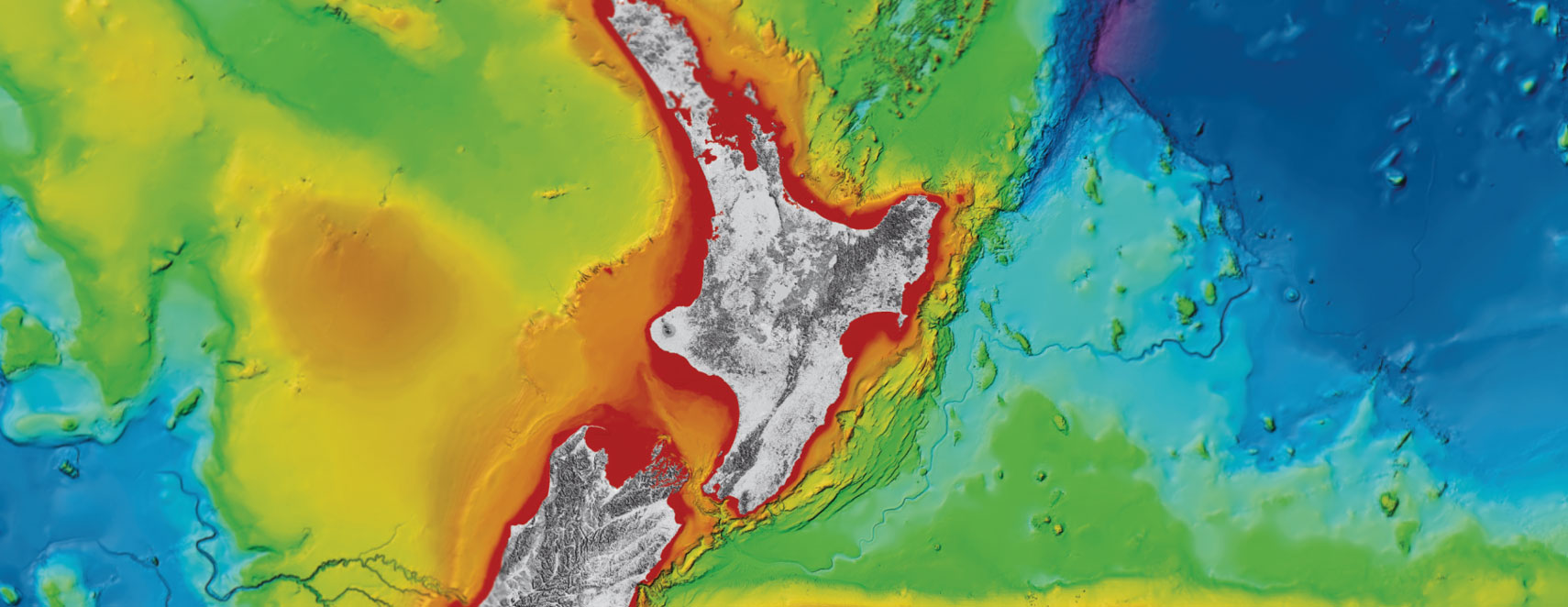
RV Tangaroa Blog – Day 2: Getting our Sea Legs

RV Tangaroa Blog – Day 2: Getting our Sea Legs
Taylor Tracey Kyryliuk
By the time I woke up on Sunday morning, three ocean-bottom seismometers (aka OBS) had already been deployed. Fortunately, the waves were not as large as the day before and some of us were well enough to work, but with a few others still experiencing seasickness, our shift schedule needed to be rearranged.
Myself and another student, Zhijian, took charge of watchkeeping duties on the bridge to record a log of the progress on placing the OBS. Each individual OBS is lowered over the side of the boat using an A-frame and then released into the ocean.
We are at depths of around 1,500-2,800 metres and it can take over an hour for the OBS to sink to the very bottom. We have a piece of equipment called a transducer that can communicate with the OBS underwater. It pings the OBS and the OBS pings back, this gives us a “travel time” that can later be used to calculate the distance to the OBS. Once the travel time stops increasing, we know the OBS has landed on the ocean floor.
The Aquarius OBS does not transmit the data it records back to the surface, instead we must wait approximately one year and then return to pick it up. Therefore, we need to make sure we have an accurate GPS location of the OBS. It may not fall directly below the boat due to water currents. To get an accurate location, we move the boat away from the OBS and record the travel time. This is done three times and is a common method called triangulation. After completing the triangulation, the boat moves to the next location which can take between 1-2 hours.
As log keepers, we have to listen in on the conversation between the person manning the bridge (steering the ship) and the instrument techs. The instrument techs are the ones that prepare and operate the equipment to communicate with the OBS.
The first instrument we deployed during our shift was a success, however the instrument techs lost communication with the second instrument. After an extra hour of trying to re-establish communication, the team agreed to move onto the next position for the next OBS. If we have enough time at the end of the voyage, we will return and try again.
Despite tiredness and nausea, Zhijian and I made it through our entire shifts. We have discovered, thanks to the advice of the steward, that lemon-flavoured ice lollies are an excellent remedy for seasickness. As is sleeping.


19 December 2023
Disclaimers and Copyright
While every endeavour has been taken by the East Coast Lab Hikurangi Subduction Zone M9 to ensure that the information on this website is
accurate and up to date, East Coast Lab Hikurangi Subduction Zone M9 shall not be liable for any loss suffered through the use, directly or indirectly, of information on this website. Information contained has been assembled in good faith.
Some of the information available in this site is from the New Zealand Public domain and supplied by relevant
government agencies. East Coast Lab Hikurangi Subduction Zone M9 cannot accept any liability for its accuracy or content.
Portions of the information and material on this site, including data, pages, documents, online
graphics and images are protected by copyright, unless specifically notified to the contrary. Externally sourced
information or material is copyright to the respective provider.
© East Coast Lab Hikurangi Subduction Zone M9 - www.eastcoastlab.org.nz / +64 6 835 9200 / info@eastcoastlab.org.nz
